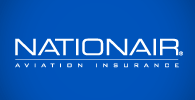Greetings, Twin Commanders.
We find ourselves in the midst of a good news/bad new scenario in the safety and insurance world of general aviation. The good news is, general aviation accident rates have hit a 20-year low, according to an analysis released by the National Business Aviation Association in September. For details, see: http://www.nbaa.org/news/2014/20140918-preliminary-national-transportation-safety-board-statistics-show-geneal-aviation-accident-rate-at-20-year-low.php
The bad news is, that trend hasn’t really been reflected in the turboprop arena for the last year.
Those of you who follow NationAir’s quarterly Turbo Prop Fleet Reports have seen that over the last 12 months the turboprop accident experience has been less than stellar. Accidents and incidents for the top 12 turboprops, including Twin Commander, have increased, particularly those that are U.S. domiciled. You don’t have to look further than your favorite television news channel to see turboprops that are making news, such as the March TBM tragedy in Colorado, or September’s tragic demise of yet another TBM that crashed into the ocean off Jamaica.
It is almost in perverse contrast that during the same timeframe, we are seeing some of the lowest turbine rotor wing accident and incident rates of the millennium, according to the International Helicopter Safety Team’s (IHST) most recent report: http://www.ihst.org/Default.aspx?tabid=1507&mid=2918&newsid2918=64005&language=en-US
So why the contrast? What are our turboprop operators failing to do, or perhaps better still, what are our turbine rotor wing operators doing right?
While any number of variables factor into most accidents and incidents, they all –– fixed and rotor wing alike –– share the same Achilles heel: lack of proper standardized training, proficiency, human factors, maintenance, weather, and the safety culture. The current good news in the rotor wing community is due in part to the herculean effort by Helicopter Association International (HAI) and IHST to rethink and improve upon those factors.
Training and proficiency are continuing challenges with any aircraft or fleet owner. Like it or not, the cost consideration of training impacts standardization, quality, proficiency, and the safety culture. It is up to all of us to expect more out of each training evolution (in plane or sim) and therefor expect more out of ourselves. By striving to fly our Twin Commander at ATP standards and maintain our aircraft to a high standard, we instill in ourselves and our crewmembers a powerful safety mindset.
Let’s hope that future fleet reports show an uptick in safety statistics. Look for the next turboprop fleet report on these pages.
In the meantime, I welcome, as always, questions, comments, and vigorous debate. Feel free to contact me at 360-635-8008 or [email protected]
Fly safe, Commanders!
Dale Bernard is Twin Commander Insurance Program Manager for NationAir.




